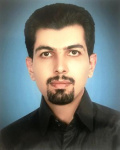| Authors | مهدی رضایی,محمود فرزین,محمد رضا نیرومند,فرشید احمدی |
|---|
| Journal | SCI IRAN |
|---|
| Paper Type | Full Paper |
|---|
| Published At | 2021-01-13 |
|---|
| Journal Grade | Scientific - research |
|---|
| Journal Type | Electronic |
|---|
| Journal Country | Iran, Islamic Republic Of |
|---|
| Journal Index | SCOPUS ,ISC ,JCR |
|---|
Abstract
Low cutting forces can significantly reduce damage risk on sensitive tissues adjacent to the bone. Applying an ultrasound tool in bone cutting is an interest among surgeons due to its better control in an incision, low cutting force, and reduced postoperative complications. In this study, by applying a full factorial design of experiments, the effects of changes in cutting tool geometry, ultrasonic power, bone-cutting direction, and tool speed on the cutting forces of cortical bone are assessed simultaneously. The analyses of variance and regression are run on experimental data, and the influence of each factor and interactions of the elements on the cutting forces are discussed. The adjusted coefficient of determination (R2adj.) of the statistical models is 91.49% and 91.15% in the main cutting force and cutting resistant force, respectively. Both the blade geometry and ultrasonic power, together with their interactions, are the most influential factors in cutting forces with 82.2% and 86.6% contribution therein, respectively. Creating teeth in the cutting edge improves the cutting process and reduces the cutting force by about 40%. The ultrasonic-powered toothed edge blade with a 1 mm pitch, low vertical velocity, and high longitudinal speed is recommended for high efficiency and low cutting force.
